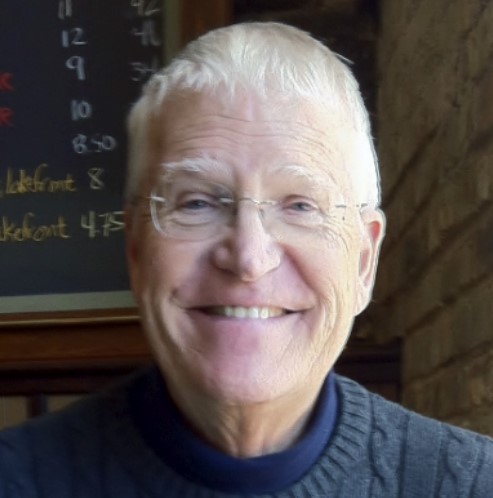Scholar-Practitioner-Leaders as Learners
By Kelley Conrad
The Beginnings
Some time ago, the College of Doctoral Studies developed the Scholar-Practitioner-Leader model to depict its mission (Coe, 2008). This new framework combined classical cognitive conceptions of doctoral scholarship – including high rigor of inquiry, academic study, and practical application – with the affective domains of learning. The model is based in part on Kegan’s (2001) observation that one cannot know something in purely cognitive or affective ways but must develop awareness from their introspection.
The Scholar-Practitioner-Leader framework is designed to develop a graduate who embodies this framework as a Scholar-Practitioner-Leader (SPL). Each SPL has learned to be a curious, reflective thinker. They are capable of responding quickly to emerging opportunities, and diagnosing and addressing immediate and local problems. SPLs are often seen driving innovation and creating new products and processes, ultimately advancing the community of practice.
Scholar Learners
SPLs are interested in lifelong learning. They are adept as learners because of their tri-part development and perspective. Self-determination theory (SDT) (Deci & Ryan, 1985; Ryan & Deci, 2000), a needs-based theory of motivation, identified the quest for competence as one of three basic human needs and a basis for action. As scholars, SPL learners value competence, confidently believe they can accomplish goals, and are willing to take on new challenges on their own or with others (Bandura, 1977; Bandura, 2012). SPLs are adults, like those observed by Knowles, Holton, and Swanson (2005), who need to know, are ready to learn and respond well to problem-centered challenges.
As educators, SPLs have experienced failures and overcome them. These experiences assist in overcoming the negative perceptions associated with the fear of failure. This is a first step in moving ahead to learn new tasks. MacLennan (2008) in “Do the Thing You Think You Cannot Do,” noted such educators are “better positioned to create a learning environment in which learners can more comfortably meet and overcome their own fears” (pp. 396-397).
SPLs as learners are also information literate people. They demonstrate an informed capacity to recognize “…when information is needed and have the ability to locate, evaluate, and use the needed information” (ALA, 1989, p. 1)
Does your scholarship reflect that of a Scholar-Practitioner-Leader? To answer this, reflect on the following:
How does my scholarly writing reflect a clear understanding of my sources, credit them correctly, and present my thinking and understanding in a clear, effective way?
How do I make sure my data is objective and clearly described in my descriptions? What feedback have I received about the objectivity and clarity of my writing?
Practitioner Learners
The workplace is the place to apply one’s knowledge. Klusek and Bornstein (2005) confirmed this in a study of the Department of Labor’s Occupational Information Network (O*Net). As a result of reviewing 21 job profiles, they found critical thinking, selecting appropriate strategies, active listening, active learning, careful listening, performance self-monitoring, effective writing, and skilled presentation were routine job requirements. SPLs as practitioners meet these demands of the work and business worlds. Bruce (1999) noted being an effective practitioner includes using emerging and different technologies while addressing broad professional responsibilities in a socially collaborative way. SPLs know the value of information and have developed skills, like information literacy, to become active learners and listeners. As observed by Kirkton and Barham (2005), the problems and information needs of the workplace are complex. They are often open-ended and unclear and may overwhelm unprepared practitioners who are on their own to assess and address the problems. Not so with SPLs who have balanced, in-depth knowledge, skills, and abilities appropriate to addressing the practical challenges. Also, SPLs have practiced applied problem-solving to create satisfactory, workable solutions.
McCarthy (2015) noted how the confidence of SPL learners as adult learners creates a special learning perspective,
When adult learners see the relevance of research to their professional practice, they are more likely to continue accessing and conducting research as practitioners, becoming lifelong learners, partners with academic researchers, and members of a community of practice to enrich their learning and teaching. Since graduating, these students have followed up their newfound passion for research and are confident in their own ability to conduct research. (p. 326)
Does your professional experience reflect that of a Scholar-Practitioner-Leader? Two questions to help you reflect on this are as follows:
How knowledgeable am I about the thinking, issues, conflicts, and research affecting my chosen field of practice now and in the future?
What is my level of applied experience? Is it adequate to obtain the kind and level of responsibilities I desire? How can I begin to make a name for myself as an emerging professional in my field?
Leader Learners
SPLs in learning roles understand the use of motivation to enervate others. As one of the basic human needs described by self-determination theory, SPLs engage others in a group to provide focus in collaborative, satisfying efforts. By appreciating that group efforts and decision-making are often better than simply the sum of the individual parts, SPLs build supportive tasks and efforts conducive to internal motivation, deep learning, and creativity of group decisions and actions (Niemiec & Ryan, 2009). The payoffs are significant. Relatedness, one of the dimensions of Gagnė and Deci’s (2005) self-determination theory, describes our innate tendencies toward being connected with others. Relatedness includes being effective and operating in coherence with the environment and others. When these relatedness needs are satisfied, people experience improved mental health.
Such relatedness is another key component easily facilitated by SPLs. As experienced action learners, SPLs routinely reflect on and improve their own performance, tightly interlink their reflection with subsequent behavior, and publically espouse their experiences to various groups and people concerned or interested in a specific practice (Altrichter, Kemmis, McTaggart, & Zuber-Skerritt, 2002).
Does your leadership reflect that of a Scholar-Practitioner-Leader? Ask yourself the following:
Short term, how can I develop my skills and comfort as a leader? What immediate opportunities do I have to extend my leadership competencies and effectiveness?
Going forward, what leadership role do I see for myself? How will I position myself to obtain such a role? How will I ensure my preparation?
Conclusion
The SPL model, as it is built into the College of Doctoral Studies (CDS) curriculum and courses, is designed to help students develop a deeper awareness of who they are currently and how they are changing as a result of their graduate education. By combining the academic, practitioner, and leadership perspectives on education and development, the SPL model frames the development of highly effective graduates who are prepared to be leaders in the challenging world today, whether as scholars, practitioners, leaders, or, ideally, a powerful and unique blending of all three perspectives.
The three prominent research centers in CDS extend the development available in the classrooms by establishing an active, research-oriented forum to connect students and faculty with active, ongoing research. The Centers also provide an avenue for faculty to work collaboratively on practical, real-world research, and for students to connect with faculty in this active research. Such experiences are invaluable to both students and faculty.
References
Altrichter, H., Kemmis, S., McTaggart, R., & Zuber-Skerritt, O. (2002). The concept of action research, Learning Organization, 9(3), 125-131.
American Library Association. (1989, January 10). Presidential Committee on information literacy: Final report. Retrieved from http://www.ala.org/ala/mgrps/divs/acrl/ publications/whitepapers/presidential.cfm
Bandura, A. (1977) Self-efficacy: towards a unifying theory of behavioral change. Psychological Review, 84(2), 191-215.
Bandura, A. (2012). On the functional properties of perceived self-efficacy revisited. Journal of Management, 38(1), 9-44
Bruce, C. S. (1999). Workplace experiences of information literacy. International Journal of Information Management, 19, 33-47.
Coe, A. (2008). Scholar-Practitioner-Leader model (SPL) [PowerPoint]. Presented at the University of Phoenix Full-Time Faculty Meeting, November 13, 2008.
Deci, E. L., & Ryan, R. M. (2000). The “What” and “Why” of goal pursuits: Human needs and the self-determination of behavior. Psychological Inquiry, 11(4), 227-268.
Gagnė, M., & Deci, E. L. (2005). Self-determination theory and work motivation. Journal of Organizational Behavior, 26(4), 331-362.
Kegan, R. (2001). In over our heads. Cambridge, MA: Harvard University Press.
Kirkton, J., & Barham, L. (2005). Information literacy in the workplace. Australian Library Journal, 54(4), 365-376. Retrieved from http://alia.org.au/publishing/ alj/54.4/full.text/kirton.barham.html
Klusek, L., & Bornstein, J. (2006). Information literacy skills for business careers. Journal of Business and Finance Librarianship, 11(4), 3-21.
Knowles, M. S., Holton III, E. F., & Swanson, R. A. (2005). The adult learner: The definitive classic in adult education and human resource development (6th ed.). Burlington, MA: Elsevier.
MacLennan, J. (2008). “Do the thing you think you cannot do:” The imperative to be an adult learner in order to be a more effective adult educator. Australian Journal of Adult Learning, 48(2), 386-398.
McCarthy, G. (2015). Motivating and enabling adult learners to develop research skills. Australian Journal of Adult Learning, 55(2), 309-330.
Niemiec, C. P., & Ryan, R. M. (2009). Autonomy, competence, and relatedness in the classroom: Applying self-determination theory to educational practice. Theory and Research in Education, 7(2), 133-144.
Ryan, R. M., & Deci, E. L. (2002). Overview of self-determination theory: An organismic dialectical perspective. In E. L. Deci & R. M. Ryan (Eds.) Handbook of self-determination research (pp. 3-33). Rochester, NY: University of Rochester Press.

ABOUT THE AUTHOR
Dr. Kelley Conrad
Dr. Kelley Conrad is an author, scholar, and a long-standing member of the University of Phoenix and the College of Doctoral Studies.
